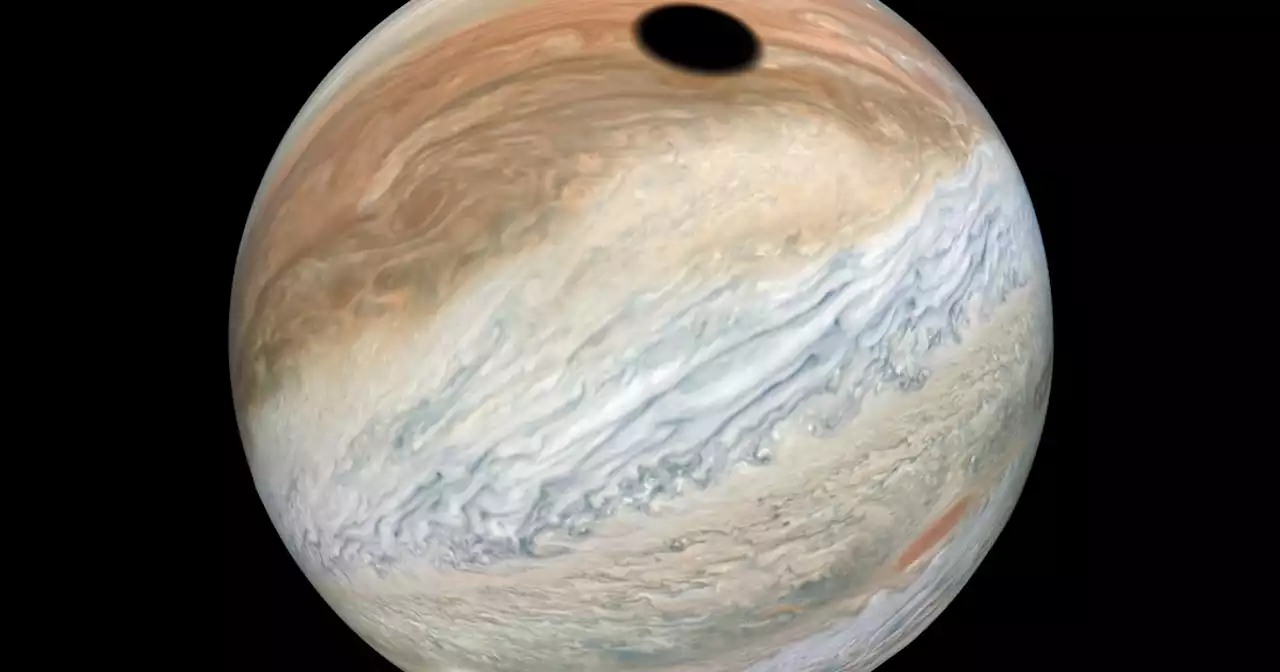The first astronomer to discover moons around Jupiter was Galileo in 1610 — but astronomers keep spotting more, with 12 found just recently. Here's why — and the theory about their origin.
This composite was made with images from NASA's Juno mission and shows the shadow on Jupiter cast by Io, one of its many moons.
"With this new haul, we're up to, I believe, 92 ... actually, I have to check that," he says, leaning over to type into his computer at the Carnegie Institution for Science, Earth and Planets Laboratory in Washington, DC."Yeah, so 92 is the number that we have right now."His team is currently tracking some more moons that, once confirmed over the next year or two, should put Jupiter over 100.
Every few years, Sheppard and his fellow astronomers take advantage of better technology and bigger telescopes to add more moons to the tally. At the moment, Jupiter holds the record for the most known moons, beating out Saturn, which has 83.Unlike the four large"Galilean" moons, which have some dramatic features like volcanoes and subsurface oceans, the ones that Sheppard finds are tiny and orbit far out.
Some of the moons he's discovered around Jupiter are about that size — a person could walk across them in around twelve minutes. From Earth, these little moons look like flecks of light. "We think that originally there were only a handful of parent moons that have been bombarded by either other moons or comets over the age of the solar system and have broken apart," he says.
